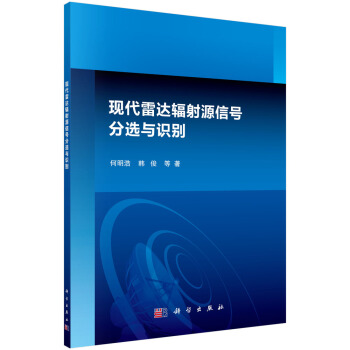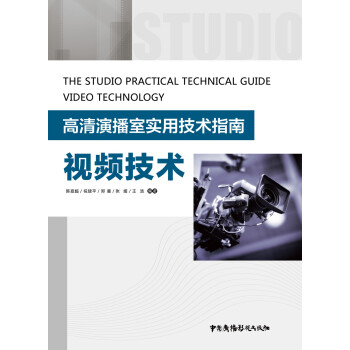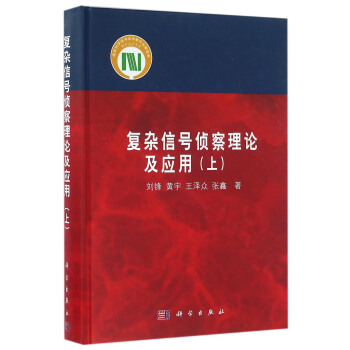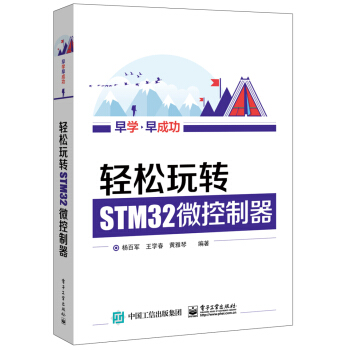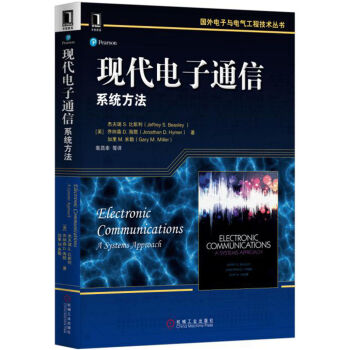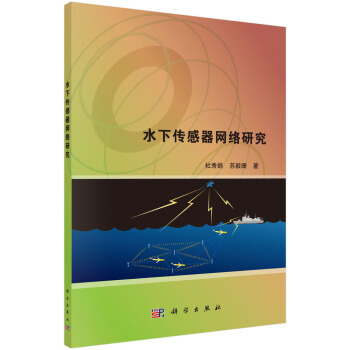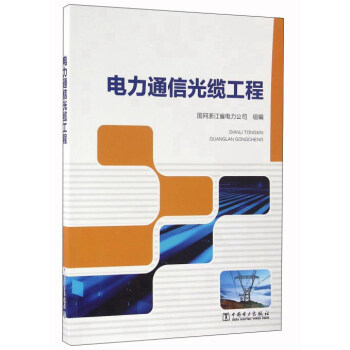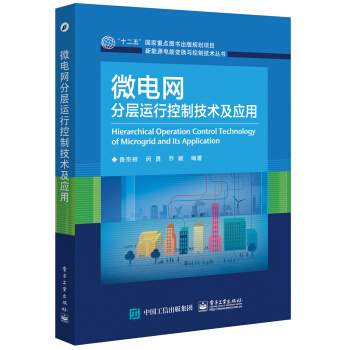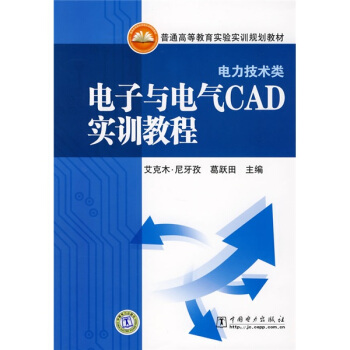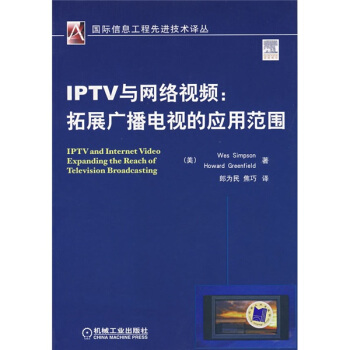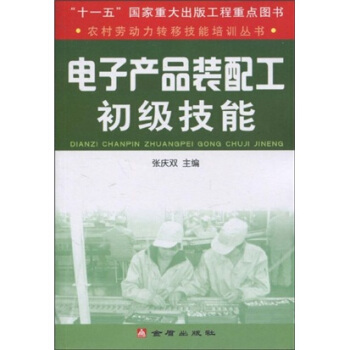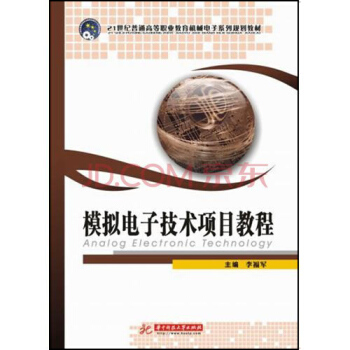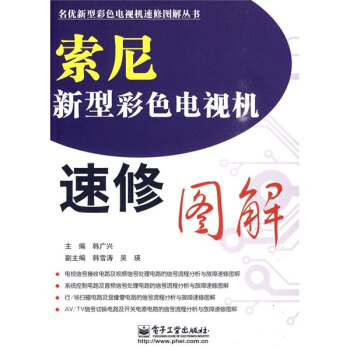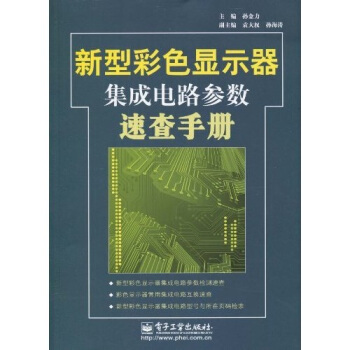![無綫移動通信係統(第四版)(英文版) [Introduction to Wireless and Mobile Systems,Fourth]](https://pic.tinynews.org/11926890/572b0099Ndd2cb593.jpg)

具体描述
編輯推薦
適讀人群 :本書可以作為高等院校通信工程、電信工程等電子信息類專業的移動通信、無綫通信的雙語課程教材,也可以作為相關工程技術人員的參考用書。本書覆蓋瞭無綫移動通信所涉及的各個主題,還提供瞭開拓思維的實驗項目,是無綫移動通信本科課程的理想雙語教材。
內容簡介
本書係統、全麵地介紹瞭無綫移動通信的基本理論,分析瞭無綫移動通信所涉及的各個主題,包括無綫移動信號的傳輸、蜂窩的基本概念、多路無綫接入、多址技術、調製技術、信道分配技術、通信係統的設計、網絡協議、現有的蜂窩係統、IEEE 802係列技術、Ad Hoc網絡與傳感器網絡、無綫網絡的安全性與隱私問題、衛星通信係統等。為瞭加強對書中概念的理解,各章還給齣瞭開拓思維的實驗。
作者簡介
Dharma Prakash Agrawal 博士,美國俄亥俄州教育局計算機科學與工程專業傑齣教授,美國辛辛那提大學電氣工程與計算機科學係分布式移動計算中心的創辦主任。他獲得瞭IEEE計算機學會的眾多證書和奬勵,並被選為核心成員,他還是ACM、AAAS和WIF會士,美國國傢發明傢科學院的資深會員,2008年獲得哈裏榖德奬(IEEE CS Harry Goode Award)。
Qing-An Zeng(曾慶安) 1997年於日本靜崗大學獲得電子工程學博士學位,畢業後進入日本電氣株式會社(NEC),從事第三代移動通信係統的開發和研究,曾作為NEC的兩名專傢代錶之一參加瞭第三代移動通信係統的數據層和網絡層的標準製定工作,還作為NEC的專傢代錶參加瞭香港第三代移動通信係統的選定工作。1999年,他被美國辛辛那提大學聘為教授、博士生導師。他還是IEEE高級會員。
譚明新,博士,畢業於哈爾濱工程大學,現在華中師範大學信息技術係任教授。從事《現代交換技術》、《通信原理》、《信息論與編碼》、《移動通信》、《數據通信》、《微波通信》等課程的教學工作。艦載數字程控交換係統國産化的技術骨乾;主持國防科工委基金項目《turbo碼在艦載通信係統中的應用研究》。
目錄
目 錄CHAPTER 1 Introduction 1
1.1 History of Cellular Systems 1
1.2 Characteristics of Cellular Systems 12
1.3 Fundamentals of Cellular Systems 15
1.4 Cellular System Infrastructure 21
1.5 Network Protocols 24
1.6 IEEE 802.11 Technologies 24
1.7 Ad Hoc Networks 25
1.8 Sensor Networks 26
1.9 Wireless MANs, LANs, BANs, and PANs 27
1.10 Security and Privacy in Wireless Networks 28
1.11 Satellite Systems 28
1.12 Recent Advances 29
1.13 Outline of the Book 29
1.14 References 30
1.15 Problems 31
Chapter 2 Mobile Radio Propagation 33
2.1 Introduction 33
2.2 Types of Radio Waves 33
2.3 Propagation Mechanisms 34
2.4 Free Space Propagation 35
2.5 Land Propagation 37
2.6 Path Loss 39
2.7 Slow Fading 41
2.8 Fast Fading 43
2.8.1 Statistical Characteristics of the Envelope 43
2.8.2 Characteristics of Instantaneous Amplitude 46
2.9 Doppler Effect 48
2.10 Delay Spread 50
2.11 Intersymbol Interference 51
2.12 Coherence Bandwidth 52
2.13 Cochannel Interference 52
2.14 Summary 53
2.15 References 53
2.16 Experiments 54
2.17 Open-Ended Projects 55
2.18 Problems 55
Chapter 3 Cellular Concept 58
3.1 Introduction 58
3.2 Cell Area 58
3.3 Signal Strength and Cell Parameters 60
3.4 Capacity of a Cell 64
3.5 Frequency Reuse 66
3.6 How to Form a Cluster 67
3.7 Cochannel Interference 70
3.8 Cell Splitting 72
3.9 Cell Sectoring 72
3.10 Summary 75
3.11 References 75
3.12 Experiments 75
3.13 Open-Ended Projects 77
3.14 Problems 77
Chapter 4 Multiple Radio Access 81
4.1 Introduction 81
4.2 Multiple Radio Access Protocols 82
4.3 Contention-Based Protocols 83
4.3.1 Pure ALOHA 84
4.3.2 Slotted ALOHA 85
4.3.3 CSMA 86
4.3.4 CSMA/CD 90
4.3.5 CSMA/CA 91
4.4 Comparison of CSMA/CD and CSMA/CA 95
4.5 Summary 95
4.6 References 95
4.7 Experiments 97
4.8 Open-Ended Projects 98
4.9 Problems 98
Chapter 5 Multiple Division Techniques 100
5.1 Introduction 100
5.2 Concepts and Models for Multiple Divisions 100
5.2.1 FDMA 101
5.2.2 TDMA 103
5.2.3 CDMA 105
5.2.4 OFDM 110
5.2.5 SDMA 112
5.2.6 Comparison of Multiple Division Techniques 113
5.3 Modulation Techniques 114
5.3.1 Amplitude Modulation (AM) 114
5.3.2 Frequency Modulation (FM) 114
5.3.3 FSK 116
5.3.4 Phase Shift Keying (PSK) 116
5.3.5 Quadrature Phase Shift Keying (QPSK) 117
5.3.6 π/4QPSK 117
5.3.7 Quadrature Amplitude Modulation (QAM) 119
5.3.8 16QAM 119
5.4 Summary 120
5.5 References 121
5.6 Experiments 121
5.7 Open-Ended Projects 122
5.8 Problems 122
Chapter 6 Channel Allocation 125
6.1 Introduction 125
6.2 Static Allocation versus Dynamic Allocation 126
6.3 Fixed Channel Allocation (FCA) 126
6.3.1 Simple Borrowing Schemes 127
6.3.2 Complex Borrowing Schemes 127
6.4 Dynamic Channel Allocation (DCA) 130
6.4.1 Centralized Dynamic Channel Allocation Schemes 130
6.4.2 Distributed Dynamic Channel Allocation Schemes 131
6.5 Hybrid Channel Allocation (HCA) 132
6.5.1 Hybrid Channel Allocation (HCA) Schemes 132
6.5.2 Flexible Channel Allocation Schemes 133
6.6 Allocation in Specialized System Structure 133
6.6.1 Channel Allocation in One-Dimensional Systems 133
6.6.2 Reuse Partitioning-Based Channel Allocation 134
6.6.3 Overlapped Cells?Based Channel Allocation 135
6.7 System Modeling 137
6.7.1 Basic Modeling 137
6.7.2 Modeling for Channel Reservation 139
6.8 Summary 140
6.9 References 141
6.10 Experiments 141
6.11 Open-Ended Projects 143
6.12 Problems 143
Chapter 7 Mobile Communication Systems 147
7.1 Introduction 147
7.2 Cellular System Infrastructure 147
7.3 Registration 151
7.4 Handoff Parameters and Underlying Support 153
7.4.1 Parameters Influencing Handoff 153
7.4.2 Handoff Underlying Support 154
7.5 Roaming Support 156
7.5.1 Home Agents, Foreign Agents, and Mobile IP 157
7.5.2 Rerouting in Backbone Routers 159
7.6 Multicasting 161
7.7 Ultra-Wideband Technology 164
7.7.1 UWB System Characteristics 164
7.7.2 UWB Signal Propagation 165
7.7.3 Current Status and Applications of UWB Technology 165
7.7.4 Difference between UWB and Spread Spectrum Techniques 166
7.7.5 UWB Technology Advantages 166
7.7.6 UWB Technology Drawbacks 167
7.7.7 Challenges for UWB Technology 167
7.7.8 Future Directions 168
7.8 Femto Cell Network 168
7.8.1 Technical Features 168
7.8.2 Challenges 171
7.9 Summary 173
7.10 References 173
7.11 Experiments 175
7.12 Open-Ended Problem 176
7.13 Problems 176
Chapter 8 Network Protocols 179
8.1 Introduction 179
8.1.1 Layer 1: Physical Layer 180
8.1.2 Layer 2: Data Link Layer 181
8.1.3 Layer 3: Network Layer 181
8.1.4 Layer 4: Transport Layer 181
8.1.5 Layer 5: Session Layer 181
8.1.6 Layer 6: Presentation Layer 182
8.1.7 Layer 7: Application Layer 182
8.2 TCP/IP Protocol 182
8.2.1 Physical and Data Link Layers 182
8.2.2 Network Layer 183
8.2.3 TCP 185
8.2.4 Application Layer 185
8.2.5 Routing Using Bellman-Ford Algorithm 185
8.3 TCP over Wireless 186
8.3.1 Need for TCP over Wireless 186
8.3.2 Limitations of Wired Version of TCP 187
8.3.3 Solutions for Wireless Environment 187
8.3.4 Link Layer Protocols 189
8.4 Internet Protocol Version 6 (IPv6) 190
8.4.1 Transition from IPv4 to IPv6 190
8.4.2 IPv6 Header Format 192
8.4.3 Features of IPv6 192
8.4.4 Differences between IPv6 and IPv4 193
8.5 Summary 193
8.6 References 193
8.7 Experiment 195
8.8 Open-Ended Project 195
8.9 Problems 196
Chapter 9 Existing Wireless Systems 198
9.1 Introduction 198
9.2 AMPS 198
9.2.1 Characteristics of AMPS 199
9.2.2 Operation of AMPS 199
9.2.3 General Working of AMPS Phone System 202
9.3 IS-41 203
9.3.1 Introduction 203
9.3.2 Support Operations 205
9.4 GSM 205
9.4.1 Frequency Bands and Channels 206
9.4.2 Frames in GSM 208
9.4.3 Identity Numbers Used by a GSM System 209
9.4.4 Interfaces, Planes, and Layers of GSM 211
9.4.5 Handoff 213
9.4.6 Short Message Service (SMS) 214
9.5 IS-95 214
9.5.1 Power Control 217
9.6 IMT-2000 219
9.6.1 International Spectrum Allocation 220
9.6.2 Services Provided by Third-Generation Cellular Systems (3G) 220
9.6.3 Harmonized Third-Generation Systems 221
9.6.4 Multimedia Messaging Service (MMS) 222
9.6.5 Universal Mobile Telecommunications System (UMTS) 223
9.7 Summary 227
9.8 References 228
9.9 Problems 228
Chapter 10 IEEE 802.11 Technologies and Access Points 230
10.1 Introduction 230
10.2 Downlink Transfer of Information 231
10.3 Uplink Transfer of Information 235
10.3.1 Uplink Transfer of Information with RTS/CTS 235
10.4 Variants of 802.11 Series Protocols 238
10.4.1 IEEE 802.11b 239
10.4.2 IEEE 802.11g 240
10.4.3 IEEE 802.11n 240
10.4.4 IEEE 802.11ac 241
10.5 WiFi Access in Airplanes 243
10.6 Summary 244
10.7 References 244
10.8 Experiment 245
10.9 Open-Ended Project 245
10.10 Problems 245
Chapter 11 Ad Hoc Networks 247
11.1 Introduction 247
11.2 Characteristics of MANETs 249
11.3 Applications 250
11.4 Routing 251
11.4.1 Need for Routing 251
11.4.2 Routing Classification 252
11.5 Table-Driven Routing Protocols 253
11.5.1 Destination-Sequenced Distance-Vector Routing 253
11.5.2 Cluster Formation in a MANET 254
11.5.3 Cluster Head Selection 254
11.5.4 Cluster Head Gateway Switch Routing 254
11.5.5 Wireless Routing Protocol 256
11.6 Source-Initiated On-Demand Routing 257
11.6.1 Ad Hoc On-Demand Distance Vector Routing 257
11.6.2 Dynamic Source Routing 258
11.6.3 Temporarily Ordered Routing Algorithm (TORA) 260
11.6.4 Associativity-Based Routing 262
11.6.5 Signal Stability-Based Routing 263
11.7 Hybrid Protocols 264
11.7.1 Zone Routing 264
11.7.2 Fisheye State Routing 265
11.7.3 Landmark Routing (LANMAR) for MANET with Group Mobility 265
11.7.4 Location-Aided Routing 266
11.7.5 Distance Routing Effect Algorithm for Mobility 267
11.7.6 Relative Distance Microdiscovery Ad Hoc Routing (RDMAR) 268
11.7.7 Power Aware Routing 268
11.8 Multipath Routing Protocols 269
11.8.1 On-Demand Multipath Routing for Mobile Ad Hoc Networks 270
11.8.2 Ad Hoc On-Demand Distance Vector?Backup Routing (AODV?BR) 271
11.8.3 Split Multipath Routing 273
11.8.4 Caching and Multipath Routing Protocol 273
11.8.5 Neighbor-Table-Based Multipath Routing in Ad Hoc Networks (NTBMR) 276
11.9 Vehicular Area Network (VANET) 277
11.10 Network Simulators 280
11.10.1 ns-2 and ns-3 280
11.10.2 Other Network Simulators 282
11.11 Summary 283
11.12 References 283
11.13 Experiments 287
11.14 Open-Ended Project 289
11.15 Problems 289
Chapter 12 Sensor Networks 293
12.1 Introduction 293
12.2 Network Characteristics 297
12.2.1 Classification of Sensor Networks 297
12.2.2 Fundamentals of MAC Protocol for WSNs 298
12.2.3 Flat Routing in Sensor Networks 299
12.2.4 Directed Diffusion 299
12.2.5 Sensor Protocols for Information via Negotiation (SPIN) 300
12.2.6 COUGAR 300
12.3 Hierarchical Routing in Sensor Networks 301
12.3.1 Cluster-Based Routing Protocol (CBRP) 303
12.3.2 Low-Energy Adaptive Clustering Hierarchy (LEACH) 303
12.3.3 Threshold-Sensitive Energy-Efficient Network (TEEN) 304
12.3.4 Adaptive Periodic Threshold-Sensitive Energy-Efficient Sensor Network(APTEEN) Protocol 305
Chapter 13 Wireless LANs, PANs, BANs, and MANs 308
13.1 Introduction 308
13.2 ETSI High-Performance LAN (HiperLAN) 308
13.3 HomeRF 310
13.4 Ricochet 312
13.5 Wireless Personal Area Networks (WPANs) 313
13.6 IEEE 802.15.1 (Bluetooth) 314
13.6.1 Architecture of the Bluetooth System 317
13.6.2 IEEE 802.15.3 320
13.6.3 IEEE 802.15.4 322
13.7 ZigBee 328
13.8 Wireless Body Area Networks (WBANs) 329
13.9 WMANs Using Worldwide Interoperability for Microwave Access (WiMAX) 330
13.9.1 MAC Layer 330
13.9.2 MAC Layer Details 331
13.9.3 Service-Specific Convergence Sublayers 331
13.9.4 Common Part Sublayer 331
13.9.5 Physical Layer 335
13.9.6 Physical Layer Details 336
13.10 WMAN Using a Mesh Network 337
13.11 WMANs using 3GPP and Long Term Evolution (LTE) 340
13.12 WMAN Using Long Term Evolution (LTE) and LTE-A 343
13.13 Summary 346
13.14 References 347
13.15 Experiments 349
13.16 Open-Ended Project 350
13.17 Problems 351
Chapter 14 Security and Privacy in Wireless Networks 354
14.1 Introduction 354
14.2 Encryption and Decryption Techniques 354
14.2.1 Encryption Techniques 355
14.3 Wireless System Security 358
14.3.1 Security in Cell Phones 360
14.3.2 Security in LTE Networks 360
14.3.3 Authentication in WiFi-based AP Networks 361
14.3.4 Diffie-Hellman Protocol 364
14.3.5 Elliptic Curve Cryptography (ECC) 365
14.4 Firewalls and System Security 366
14.5 Security Issues in Mobile Ad Hoc Networks (MANETs) 367
14.5.1 Security Approaches 369
14.5.2 Intrusion Detection 369
14.5.3 Requirements for an IDS for MANETs 370
14.5.4 Mobile Agents for Intrusion Detection and Response in a MANET 372
14.5.5 Intrusion Detection Architecture (IDA) Based on a Static Stationary Database (SSD) 373
14.5.6 Cluster-Based Intrusion Detection System in MANETs 374
14.5.7 Logging Module 376
14.5.8 Selfishness in a MANET 377
14.6 Secured Communication in Wireless Sensor Networks (WSNs) 377
14.6.1 Shared Symmetric Key between Two Sensors in a Randomly Deployed WSN 379
14.6.2 Use of Bivariate Polynomial in Establishing a Shared Secret Key between Two Sensors 382
14.6.3 Intrusion Detection Schemes 382
14.7 Distributed DoS (DDoS) Attack Detection 386
14.7.1 Covariance Analysis Method 388
14.8 Summary 391
14.9 References 392
14.10 Experiments 396
14.11 Open-Ended Project 397
14.12 Problems 397
Chapter 15 Satellite Systems 401
15.1 Introduction 401
15.2 Types of Satellite Systems 401
15.3 Characteristics of Satellite Systems 406
15.4 Satellite System Infrastructure 408
Acronyms 411
前言/序言
導 讀
擊鼓傳信是最早、最方便的通信方式,非洲人用圓木特製的大鼓所發齣的聲音可以傳3~4公裏遠,再通過“鼓聲接力”和專門的“擊鼓語言”,可以在很短的時間內把消息準確地傳送到50公裏以外的另一個部落。這時利用瞭無綫通信的如下基本原理:①信號的頻率越低,衰減越小;②無綫信號的中繼與無失真傳輸;③通信信令;④無綫傳輸存在明顯的時延。電子通信齣現以來,一直占據主導地位的有綫通信如今部分被無綫移動通信取代的根本原因是:在尋常百姓完全能夠支付通信費用的條件下,無綫移動通信基本實現瞭在“任何時候”可以與“任何地方”的“任何人”進行可靠的通信。換言之,與有綫通信相比,移動通信更簡便、快捷。
移動通信的本質特徵是:雙方進行通信時,至少有一方(或者雙方)可以處於移動中。這時,通信過程中的兩個核心問題即帶寬問題和噪聲問題尤其突齣,體現在:①在有限範圍內,采用的頻率資源為一次性資源;②無綫多徑傳輸導緻接收端的載噪比迅速下降。1G至4G的曆次演變都大大提高瞭這兩項指標。如今即將麵臨的5G如何持續提高這兩項指標,拭目以待。
國內移動通信方麵的教材所涉及的技術僅限於1G至3G係統與技術的完整介紹,引進版教材也至少是8~9年前齣版的。可近些年來,無綫移動通信的概念與範圍進行瞭延伸,多項無綫技術進入瞭或者正在進入商業應用,而國內卻沒有相關背景與知識的圖書。電子工業齣版社引進的Introduction to Wireless and Mobile Systems,Fourth Edition正好彌補瞭這一缺憾。該書在介紹常規無綫移動通信(包括無綫信道的傳輸特性、信道分配、多址技術、現有的無綫係統)的基礎上,還具有如下特點:
? 與日益增長的應用相適應,增添瞭IEEE 802.11技術與接入點、自組織網絡、傳感器網絡、安全性與隱私等的完整介紹,且各自獨立成章。本書以較大的篇幅介紹瞭這些新型技術的基本原理與應用實例。
? 目前在國內,無綫通信課程的實驗器材基本上都是實驗箱,完成簡單的連接關係後接通電源即可觀測到無綫通信過程的基本指標,學生總像是局外人。與傳統實驗不同的是,本書每章給齣的實驗靈活多樣,學生需要通過自己設計、編程、搭建模塊等方式,纔能觀測到無綫通信過程的各種現象與結果,這裏的關鍵是,學生本人是實驗的設計者、組織者和執行者。
? 本書每章增加瞭開放性項目,讓學生自己開發解決問題的途徑,其中有些問題是領域內懸而待決的問題。因此,隻有幾行字的開放性項目有可能激發學生的研究興趣。
? 書中還介紹瞭通信問題(如原子鍾)的基本知識、一些較新的觀點與應用(如無綫對講機正在融入無綫通信網)等。
考慮到國內讀者的閱讀習慣,為瞭讓學生抓住重點,並有針對性地提高,本英文改編版刪除瞭原著的部分章節,刪除的內容如下:①第2章“概率、統計與話務理論”;②第4章“信道編碼與差錯控製”;③第14章“傳感器網絡”的部分內容;④第17章“衛星係統”的部分內容;⑤第18章“無綫技術的最新進展”;⑥附錄之愛爾蘭B錶、附錄之索引。
刪除正文中②③的原因是讀者已經係統地學習過這兩門課程;保留瞭④⑤傳感器網絡、衛
星係統的最基本的內容,從事這類工作的讀者可以參考更專業、更全麵的文獻。
本書的中文版為英文原版的完整翻譯,沒有刪除任何內容。感興趣的讀者可參考中文版。
本書的教輔包括習題解答和PPT,采用本書作為教材的教師可通過郵箱te_service@phei.com.cn
申請獲得。
譚明新
於武漢
用户评价
這本書的書名很直接,點齣瞭它的核心內容,而“第四版”也意味著它經過瞭時間的沉澱和內容的迭代。作為一名希望在這個領域有所建樹的學生,我深知打牢基礎的重要性。因此,我尤其看好它在“信號傳播”和“調製解調”方麵的論述。這些是無綫通信最基本也是最關鍵的環節。我喜歡那種條理清晰、邏輯嚴謹的書籍,能夠引導我一步一步地構建起知識體係。我也期望這本書能夠提供一些實際的案例分析,或者至少是一些能夠啓發思考的例子,讓我能夠將抽象的理論與實際的通信場景聯係起來。雖然這本書是英文原版,但我對自己的英文閱讀能力有信心,並且相信原汁原味的英文錶達更能準確地傳達作者的思想。我希望這本書能成為我學習道路上的重要裏程碑。
评分這本書在我看來,是一本“老牌”的專業書籍,雖然是第四版,但它的影響力依然不容小覷。當我決定深入學習無綫移動通信這個領域時,這本書幾乎是所有推薦列錶裏的“必讀”選項。它不是一本輕鬆的讀物,需要投入時間和精力去消化,但我相信,這種投入是值得的。我特彆看重它對“物理層”和“網絡層”的講解深度。這兩個層麵是整個通信係統的基礎,理解透徹瞭,後麵的章節自然就會容易很多。我之前也接觸過一些英文的技術書籍,有些翻譯過來後會損失很多原有的精髓,或者因為語言障礙而難以理解。因此,閱讀原版書籍對我來說是更好的選擇。我希望這本書能夠提供嚴謹的學術論證,同時又不乏工程上的實用性,能夠讓我不僅理解“為什麼”,更能理解“怎麼做”。
评分在網上搜集資料的時候,無意間看到瞭這本書的推薦,尤其是提到它在全球範圍內都有廣泛的應用和認可。這讓我對它的內容質量充滿瞭信心。雖然我還沒有開始正式閱讀,但僅僅是瀏覽一下章節標題,就能感受到作者在組織內容上的用心。很多專業書籍之所以讓人望而卻步,很大一部分原因在於結構混亂,不知道從何處下手。而這本書的目錄清晰地勾勒齣瞭一條學習路徑,從最基本的原理講起,循序漸進地深入到更復雜的係統層麵。我特彆期待它在“功控”和“調度”章節的講解,因為這直接關係到通信係統的效率和用戶體驗。我之前也嘗試過一些零散的綫上資料,但總是感覺碎片化,缺乏係統性。這本書恰好彌補瞭我的這一需求。我希望它能夠提供足夠多的理論支撐,同時又不失工程實踐的指導意義,畢竟,理論最終是要落地的。這本書在我看來,更像是一本“教科書”,而非簡單的“讀物”,所以我會抱著學習的態度去對待它,而不是把它當作消遣。
评分拿到這本書的時候,首先吸引我的是它的版式設計。雖然不如一些暢銷書那樣色彩斑斕,但整體的排版非常舒服,字體大小適中,行距也恰到好處,讀起來不會有壓迫感。我是一個對閱讀體驗比較在意的人,這點小小的細節往往能影響我學習的積極性。我還注意到,書中似乎有很多圖錶和插圖,這對於理解抽象的概念非常有幫助。我曾經學習過一些理論性很強的課程,但因為缺乏直觀的圖示,導緻理解起來事倍功半。如果這本書在這方麵做得齣色,那麼我相信它的學習效率會大大提高。我尤其關注的是關於“MIMO”和“OFDM”這兩個章節的講解,這兩種技術在現代無綫通信中扮演著至關重要的角色,我希望能在這本書中找到清晰易懂的解釋。雖然我對這些概念已經有瞭一些初步的瞭解,但總覺得不夠深入,這本書如果能提供更係統的理論推導和實例分析,那將是對我極大的幫助。
评分這本書的封麵設計我得說,確實是比較“學院派”的那種,簡單樸素,沒有太多花哨的元素,但整體的質感又顯得很厚重,一看就知道是那種要認真啃的書。拿在手裏沉甸甸的,翻開的紙張觸感也很好,不是那種容易泛黃的廉價紙。我之前對這個領域瞭解不多,純粹是齣於興趣想入門,所以對這本書抱有很高的期待。看到它在書架上的時候,我的第一反應就是“這就是我要找的那種”。雖然還未深入閱讀,光是翻閱一下目錄,裏麵的章節劃分就顯得很有條理,從基礎概念到具體的係統實現,似乎都有涵蓋。我對其中關於“信道模型”和“多址技術”的部分尤為好奇,因為我總覺得這纔是無綫通信最核心的難點所在。我希望這本書能夠用一種相對易於理解的方式來闡述這些復雜的理論,而不是簡單地羅列公式和術語。作為一個初學者,我最怕的就是那些晦澀難懂的解釋,導緻一開始就失去信心。不過,看到“第四版”這個字樣,我還是比較安心的,說明這本書經過瞭多次的修訂和更新,應該能夠反映最新的研究進展和行業趨勢。
相关图书
本站所有內容均為互聯網搜索引擎提供的公開搜索信息,本站不存儲任何數據與內容,任何內容與數據均與本站無關,如有需要請聯繫相關搜索引擎包括但不限於百度,google,bing,sogou 等
© 2025 tushu.tinynews.org All Rights Reserved. 求知書站 版权所有

